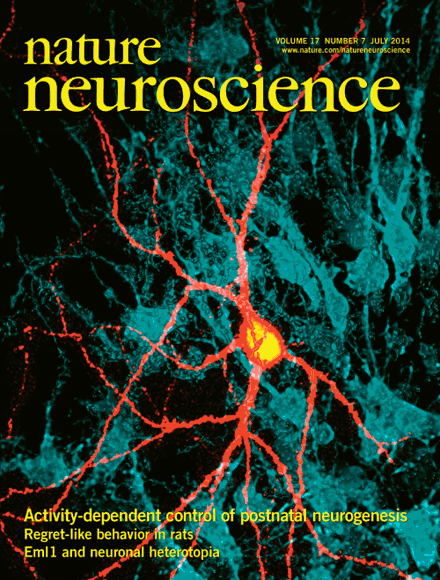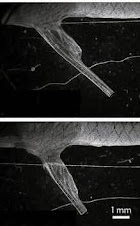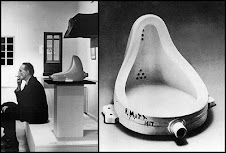UNEXPECTED STEM CELLS FACTORIES FOUND INSIDE TEETH
UNEXPECTED STEM CELLS FACTORIES FOUND INSIDE TEETH
By Sarah C. P. Williams
Development is typically thought to be a one-way street. Stem cells produce cells that mature into specific types, such as the neurons and glia that compose nervous systems, but the reverse isn’t supposed to happen. Yet researchers have now discovered nervous system cells transforming back into stem cells in a very surprising place: inside teeth. This unexpected source of stem cells potentially offers scientists a new starting point from which to grow human tissues for therapeutic or research purposes without using embryos.
“More than just applications within dentistry, this finding can have very broad implications,” says developmental biologist Igor Adameyko of the Karolinska Institute in Stockholm, who led the new work. “These stem cells could be used for regenerating cartilage and bone as well.”
Researchers knew that the soft “tooth pulp” in the center of teeth contained a small population of mesenchymal stem cells, the type of stem cell that can mature into teeth, bones, and cartilage. But no one had conclusively determined where these stem cells came from. Adameyko figured that if he could trace their development, he might be able to recreate the process in the lab, thereby offering a new way of growing stem cells for tissue regeneration.
He and his and colleagues were already studying glial cells, which support and surround neurons that wind through the mouth and gums and help transmit signals of pain from the teeth to the brain. When they added fluorescent labels to a set of glial cells in mice, they saw that over time, some of them migrated away from neurons in the gums toward the inside of teeth, where they transformed into mesenchymal stem cells. Eventually, the same cells matured into tooth cells, the team reported this week in Nature.
Before this experiment, it was generally believed that nervous system cells could not revert back to a flexible stem cell state, so it was a surprise to see that process in action, Adameyko says. “Many people in the community were convinced … that one cell type couldn’t switch to the other,” he says. “But what we found is that the glial cells still very much maintain the capacity” to become stem cells. If researchers can learn which chemical cues in the teeth pulp signal glial cells to transform into mesenchymal stem cells, they could have a new way to grow stem cells in the lab, he adds.
“This is really exciting because it contradicts what the field had thought in terms of the origin of mesenchymal stem cells,” says developmental biologist Ophir Klein of the University of California, San Francisco, who was not involved in the new work. But it’s also just the first step in understanding the interplay between the different cell populations in the body, he adds. “Before we really put the nail in the coffin in terms of where mesenchymal stem cells are from, it’s important to confirm these findings with other techniques.” If that confirmation comes, though, a new source of stem cells for researchers will be invaluable, he says.
Posted in Biology
By Sarah C. P. Williams
Development is typically thought to be a one-way street. Stem cells produce cells that mature into specific types, such as the neurons and glia that compose nervous systems, but the reverse isn’t supposed to happen. Yet researchers have now discovered nervous system cells transforming back into stem cells in a very surprising place: inside teeth. This unexpected source of stem cells potentially offers scientists a new starting point from which to grow human tissues for therapeutic or research purposes without using embryos.
“More than just applications within dentistry, this finding can have very broad implications,” says developmental biologist Igor Adameyko of the Karolinska Institute in Stockholm, who led the new work. “These stem cells could be used for regenerating cartilage and bone as well.”
Researchers knew that the soft “tooth pulp” in the center of teeth contained a small population of mesenchymal stem cells, the type of stem cell that can mature into teeth, bones, and cartilage. But no one had conclusively determined where these stem cells came from. Adameyko figured that if he could trace their development, he might be able to recreate the process in the lab, thereby offering a new way of growing stem cells for tissue regeneration.
He and his and colleagues were already studying glial cells, which support and surround neurons that wind through the mouth and gums and help transmit signals of pain from the teeth to the brain. When they added fluorescent labels to a set of glial cells in mice, they saw that over time, some of them migrated away from neurons in the gums toward the inside of teeth, where they transformed into mesenchymal stem cells. Eventually, the same cells matured into tooth cells, the team reported this week in Nature.
Before this experiment, it was generally believed that nervous system cells could not revert back to a flexible stem cell state, so it was a surprise to see that process in action, Adameyko says. “Many people in the community were convinced … that one cell type couldn’t switch to the other,” he says. “But what we found is that the glial cells still very much maintain the capacity” to become stem cells. If researchers can learn which chemical cues in the teeth pulp signal glial cells to transform into mesenchymal stem cells, they could have a new way to grow stem cells in the lab, he adds.
“This is really exciting because it contradicts what the field had thought in terms of the origin of mesenchymal stem cells,” says developmental biologist Ophir Klein of the University of California, San Francisco, who was not involved in the new work. But it’s also just the first step in understanding the interplay between the different cell populations in the body, he adds. “Before we really put the nail in the coffin in terms of where mesenchymal stem cells are from, it’s important to confirm these findings with other techniques.” If that confirmation comes, though, a new source of stem cells for researchers will be invaluable, he says.
Posted in Biology















































































